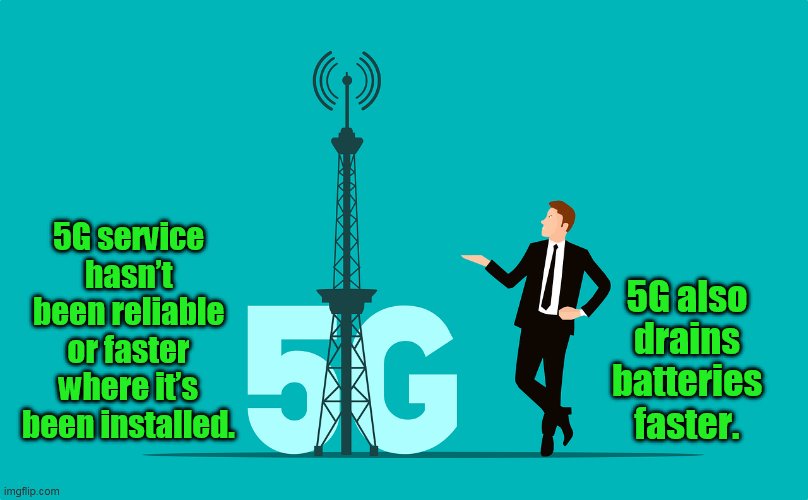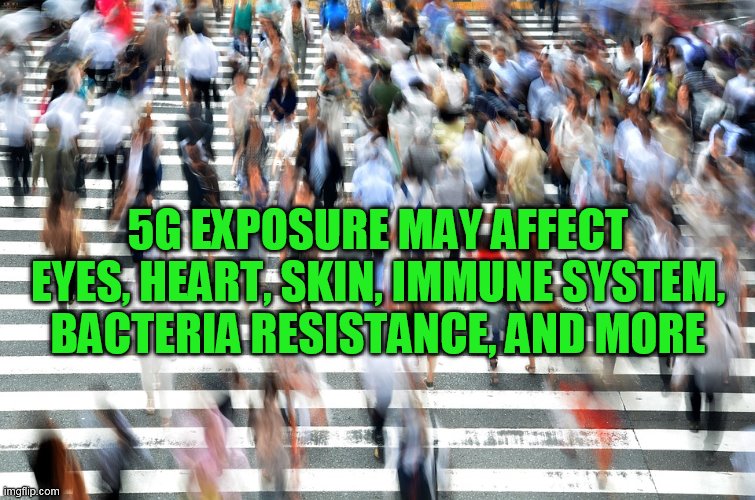 By B.N. Frank
By B.N. Frank
Opposition to 5G is worldwide and for numerous significant safety issues associated with the increasingly controversial technology. This has limited, slowed, and/or stopped deployment in some locations (see 1, 2) including near U.S. airports (see 1, 2, 3). Nevertheless, more deployment and activation is planned anyway.
From RCR Wireless:
Study shows big surge in global outdoor 5G small cell deployment
ABI Research said that the deployment of outdoor 5G small cells is forecast to reach 13 million by 2027
A total of 13 million outdoor 5G small cells will be deployed at a global level by 2027, according to a recent report by technology intelligence firm ABI Research.
The study also anticipates that 5G small cell deployments will overtake 4G six years from now, in 2028.
ABI Research noted that mobile network operators promise their subscribers that 5G technology will provide higher capacity, faster speed, higher energy efficiency, lower RAN latency and that they will support create massive connectivity. However, these characteristics mean skyrocketing mobile data traffic demands. According to ABI Research, worldwide 5G mobile data traffic will reach 1676 exabytes in 2026, a compound annual growth rate (CAGR) of 63%.
ABI Research also highlighted that the growing data traffic forces mobile carriers to upgrade their network capacity, adding that the most practical approach is the dense deployment of 5G small cells. Currently, massive MIMO (mMIMO) macro cells have fulfilled most 5G capacity demands on a global basis, but these may not likely be adequate, making small cells more critical, according to the research firm.
“5G small cells complement macro cells, boosting network capacity and extending coverage in dense areas where signals are weak or unavailable. They also allow network operators to derive more value from their existing spectrums by exploiting them more efficiently,” said Fei Liu, 5G and mobile network infrastructure industry analyst at ABI Research. “Compared to the previous generation small cells, 5G small cells face more challenges in design and performance. 5G small cells need to be smaller and lighter while supporting larger bandwidths such as 100MHz and 200MHz. With 5G, there is a wider range of deployment scenarios, forcing vendors to provide comprehensive solutions to support every need.”
In the consumer market, mobile network operators in most countries are currently focusing on macro cell deployment for 5G. According to ABI Research, massive 5G small cell deployments will occur around 2025 when network capacity on the C-band should run out without additional spectrum or small cell densification. Enterprises and industry verticals are already deploying 5G small cells for their private networks.
“5G small cells make use of the backhaul established for macro cells, so mobile network operators should start deploying 5G small cells at locations with backhaul already established,” Liu said. “5G small cells can co-exist with macro cells, and self-organizing networks help minimize risks from interferences between cells. Alternatively, mobile network operators should deploy different frequency bands on small and macro cells.”
Decades of research has already proven that exposure to radiation from cell towers and antennas as well as other sources of wireless radiation is biologically and environmentally harmful.
Specifically, in regard to 5G, since 2017 doctors and scientists have asked for moratoriums on Earth and in space (see 1, 2) and the majority of scientists oppose deployment. Since 2018 there have been reports of people and animals experiencing symptoms and illnesses after it was activated (see 1, 2, 3, 4, 5). Additionally, in 2019, telecom executives gave congressional testimony that they had NO independent scientific evidence that 5G is safe. Some researchers have also suggested that 5G activation may be contributing to COVID-19 infections as well as hundreds of thousands if not millions of bird deaths. Of course, there are also confirmed health risks associated with exposure to 4G and other sources of wireless Wi-Fi radiation (see 1, 2) and electromagnetic fields (aka “Electrosmog”) as well, hence the opposition to both 5G and 4G infrastructure especially near homes (see 1, 2, 3, 4, 5, 6, 7).
Adding insult to injury, 5G service continues to receive bad reviews (see 1, 2, 3, 4, 5, 6, 7, 8, 9). Experts also continue to warn about its cybersecurity vulnerabilities. Regardless, 5G doesn’t seem to be the end goal – it’s 6G which, of course, isn’t risk-free either.
Activist Post reports regularly about 5G, 4G, and other unsafe technology. For more information visit our archives and the following websites.
- Safe Tech International
- Wireless Information Network
- Electromagnetic Health
- EMF Scientist
- Environmental Health Trust
- Physicians for Safe Technology
Become a Patron!
Or support us at SubscribeStar
Donate cryptocurrency HERE
Subscribe to Activist Post for truth, peace, and freedom news. Follow us on SoMee, Telegram, HIVE, Flote, Minds, MeWe, Twitter, Gab, What Really Happened and GETTR.
Provide, Protect and Profit from what’s coming! Get a free issue of Counter Markets today.


Be the first to comment on "New Report: 5G “will overtake 4G” by 2028; 13 Million Outdoor 5G Small Cells Deployed by 2027"